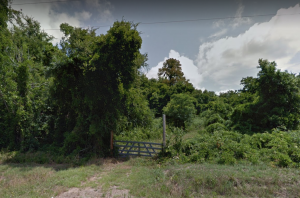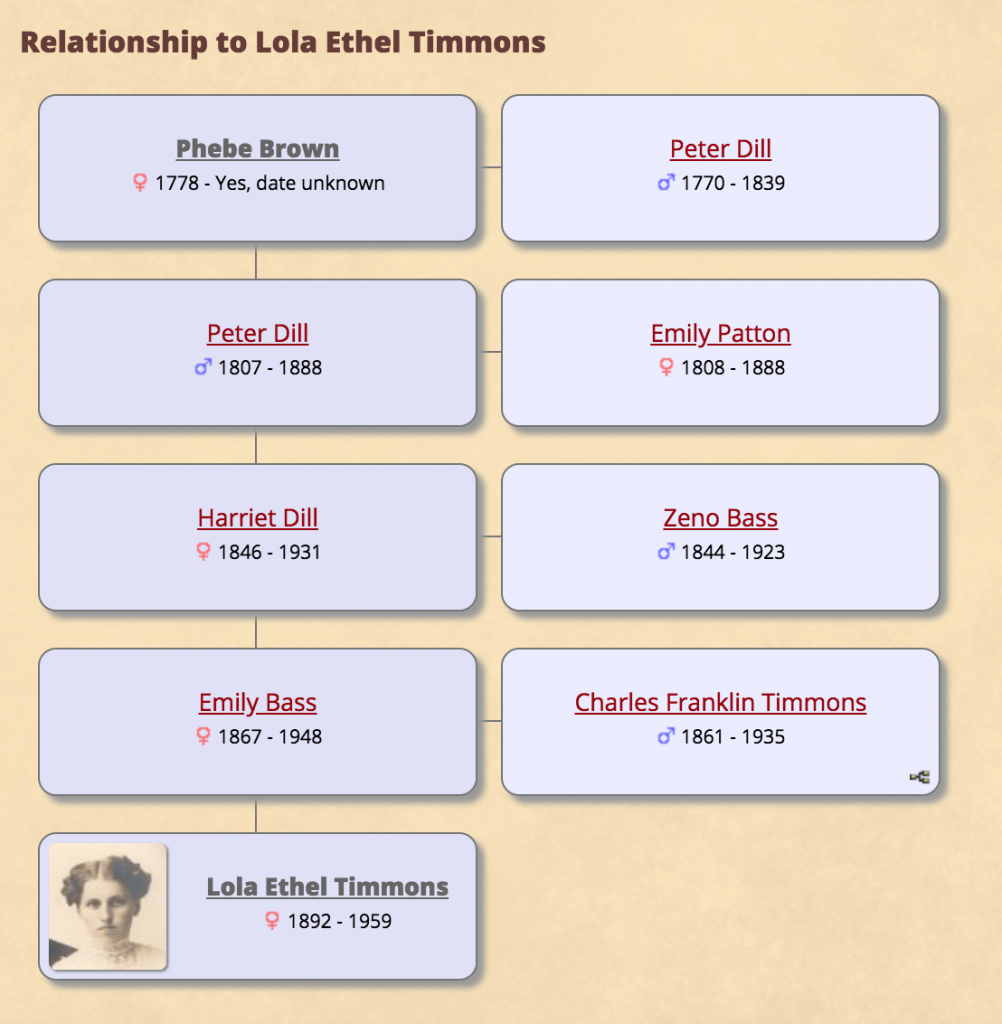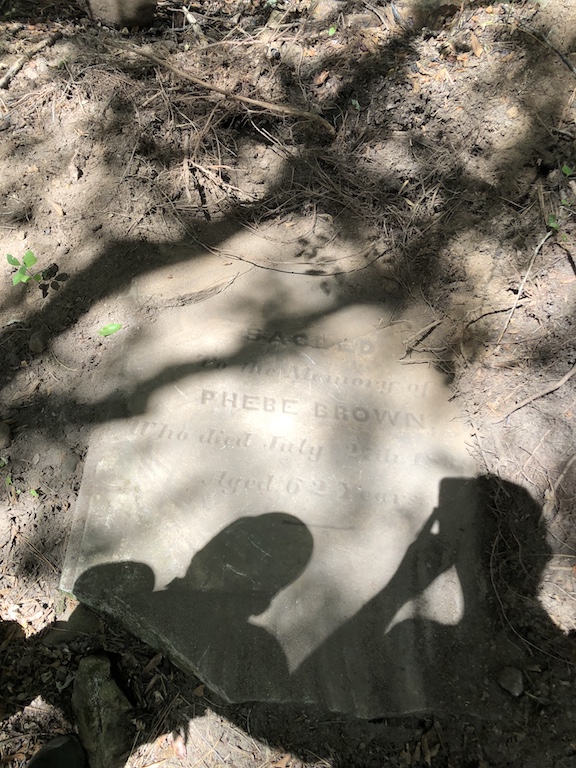The great thing about having your own family history blog and website is that researchers can find you through Google. For example, if you Google “phebe brown georgia”, my website shows up on the first page of search results. This can have wonderful consequences.
As a result of someone’s Google search last week, I got an email out of the blue that has added a truly surprising plot twist to the biography of Phebe Brown.
Background
Phebe Brown is my 5x-great-grandmother. Here’s how she is related to my great-grandmother Lola Timmons:
She was born on March 5, 1778 in Loudoun County, Virginia to a Quaker family1. When she was six years old, the family moved south – as many Quaker families did – in search of better farming opportunities. The Brown family ended up settling in the southernmost Quaker colony in Wrightsboro in Columbia County, Georgia.
In 1795, Phebe’s father, Mercer Brown, bought the mill and plantation that had been built by one of the colony’s founders, Joseph Maddock2. By then, the colony was starting to fall apart. Successful farming in Georgia was based on cotton and tobacco, and farmers couldn’t be successful without slave labor. The Quakers were morally opposed to slavery, and by 1795 an exodus had already begun. One by one, families packed up and moved north to Ohio, Indiana and Illinois.
The Browns stuck it out longer than most. Phebe and her siblings were marrying and starting families of their own. Phebe married Peter Dill and soon had three boys – William, Daniel and Mercer. Peter and Phebe were able to buy a farm of their own. In 1803, they bought 110 acres of land from Solomon Vernon for $3303. The land was bounded on the west by Maddock Creek – about 10 miles upstream from Mercer’s mill near Wrightsboro.
Just two years later, however, Peter and Phebe sold the land to Robert Lazenby4 and joined the Quaker migration. They moved to the western edge of Ohio and five more children were added to the family.
Phebe is mentioned one last time in the Quaker meeting records for the Miami (Ohio) Monthly Meeting in September, 1805. Her last child, Elizabeth, was born in Ohio in 1811. There is no mention of Phebe after that – she disappears from the records.
Her husband, Peter Dill, remarried to Sarah Wimmer in 18175. Peter and Sarah had eight children altogether – in addition to the eight Peter had with Phebe. Sarah’s relatives moved to Sangamon County, Illinois, and it seems that Peter and Sarah may have moved there also. At the time of Peter’s death in 1839, he owned land in Sangamon County, although his will was probated in Preble County, Ohio.
The sixteen Dill children ended up scattered throughout the midwest. Some stayed in Ohio, some settled in Illinois, and at least one moved to Iowa. My 4x-great-grandfather Peter Dill Jr. ended up in Morgan County, Indiana. I have written at length about Daniel Dill, the third of Peter and Phebe’s children. He somehow ended up in Augusta, Georgia where he owned a confectionary shop. He married Mary Ann Dill, likely a cousin, in 1832. By 1839, he had relocated to Mobile, Alabama with his four slaves. I have written at length about Daniel’s remarkable last years, his death, and the unusual circumstances of his estate settlement.
The Plot Twist

So I got an email last week from a gentleman in Georgia, let’s call him “Joe”, who had some information that he thought might be of interest.
Joe had been exploring around an old homesite on his rural property in McDuffie County (formerly Columbia County) and had come across a gravestone. Clearing away the accumulated dirt and brush, he found a remarkable inscription. After uncovering it, he began a Google search and that’s how he found me.
SACRED
to the memory of
PHEBE BROWN
Who died July 26, 1839
Aged 62 years
Let’s all shout together, “Oh My God!!”
At first I didn’t believe it – Phebe died in Ohio, right? Everyone has presumed that she died sometime before her husband Peter remarried. And shouldn’t she be under a tombstone that says “Phebe Dill“? It doesn’t quite add up.
On the other hand, if she died at age 62 in 1839, that means she was born around 1777 – not quite spot on her birthday but pretty darn close. What other Phebe Brown could this possibly be?
I followed up with Joe to get the location of his property.
It’s about 10 miles from Wrightsboro and is bordered on the west by “Maddox Creek” – likely the very land that Peter and Phebe owned back in 1805.
I think this really is OUR Phebe!
What this all means
So what happened to Phebe between 1811 (the birth of her last child in Ohio) and 1817 (when her husband Peter remarried)? Were they divorced? Did she run away? Was she presumed dead? I’m leaning toward the latter – Peter and his second wife Sarah named their second daughter Phebe. It’s hard for me to believe that they would have named a child after his ex-wife.
If she ran away, did she take Daniel with her? He would have been seventeen years old in 1817 – old enough to accompany his mother and help her re-establish.
It’s possible that Daniel stayed in Georgia with his mother until she died. It was on September 8, 1839 that he was on a steamship from Mobile to Pensacola – just a few weeks after his mother’s death, according to the tombstone.
So many more questions that need answers:
- First of all, I need to follow a chain of title to confirm for sure that the tombstone is really on the property that was owned by Peter and Phebe. Joe wants to know about that chain of title too; the land has been in his family for a long time.
- Is there a record of a divorce from Peter somewhere, or some sort of marriage bond confirming his single status? I’ve looked a little in the available records for Preble and Montgomery counties in Ohio; no luck yet. I don’t think Peter could have gotten away with bigamy, he stayed living in the same community after his marriage to Sarah Wimmer.
- Can we find a record of Phebe living in Georgia between 1817 and 1839? I’ve done some newspaper searches and not found anything yet.
- Why was she going by “Brown” and not “Dill”?
- Why was she (or Daniel) still connected to this property, a piece of land that the family had only owned for two years some thirty years earlier? A cursory look at the records suggests that in 1839 it was still owned by Robert Lazenby, the man who bought the property from Peter and Phebe in 1805. Why the lasting connection to Phebe?
- To deepen the mystery even further, my mom has a DNA match in the range of 5th-8th cousin to someone descended from the Lazenby family of Columbia County, Georgia. This can’t be coincidence, can it? Did Phebe have another child after she moved back to Georgia?
As Winston Churchill once said, “It is a riddle, wrapped in a mystery, inside an enigma…”
1Encyclopedia of American Quaker Genealogy, Vol I–VI, 1607-1943, Hinshaw, William Wade, Volume 1, p. 1043, Wrightsborough Monthly Meeting.
2“The story of Wrightsboro, 1768-1964” by Pearl Baker.
3Columbia County Deed Records and Mortgages, 1791-1911; Deeds and mortgages v. I, M 1798-1809, Image 327 of 629.
4Columbia County Deed Records and Mortgages, 1791-1911; Deeds and mortgages v. I, M 1798-1809, Image 561 of 629.
5Ohio, County Marriages, 1774-1993, Ohio., Peter Dill and Sarah Wimmer, A-1: 63.



Great detective work! Well done!
WOW! I love all you’re finding. Keep up the good work!
Did Phebe have a brother who might have married a Phebe and this might be her gravestone? It does seem odd that that stone says Phebe Brown. I think I would expand my research to confirm that there wasn’t a second Phebe Brown, whether by birth or marriage, just to be sure.
These are great suggestions, more things to add to the list!